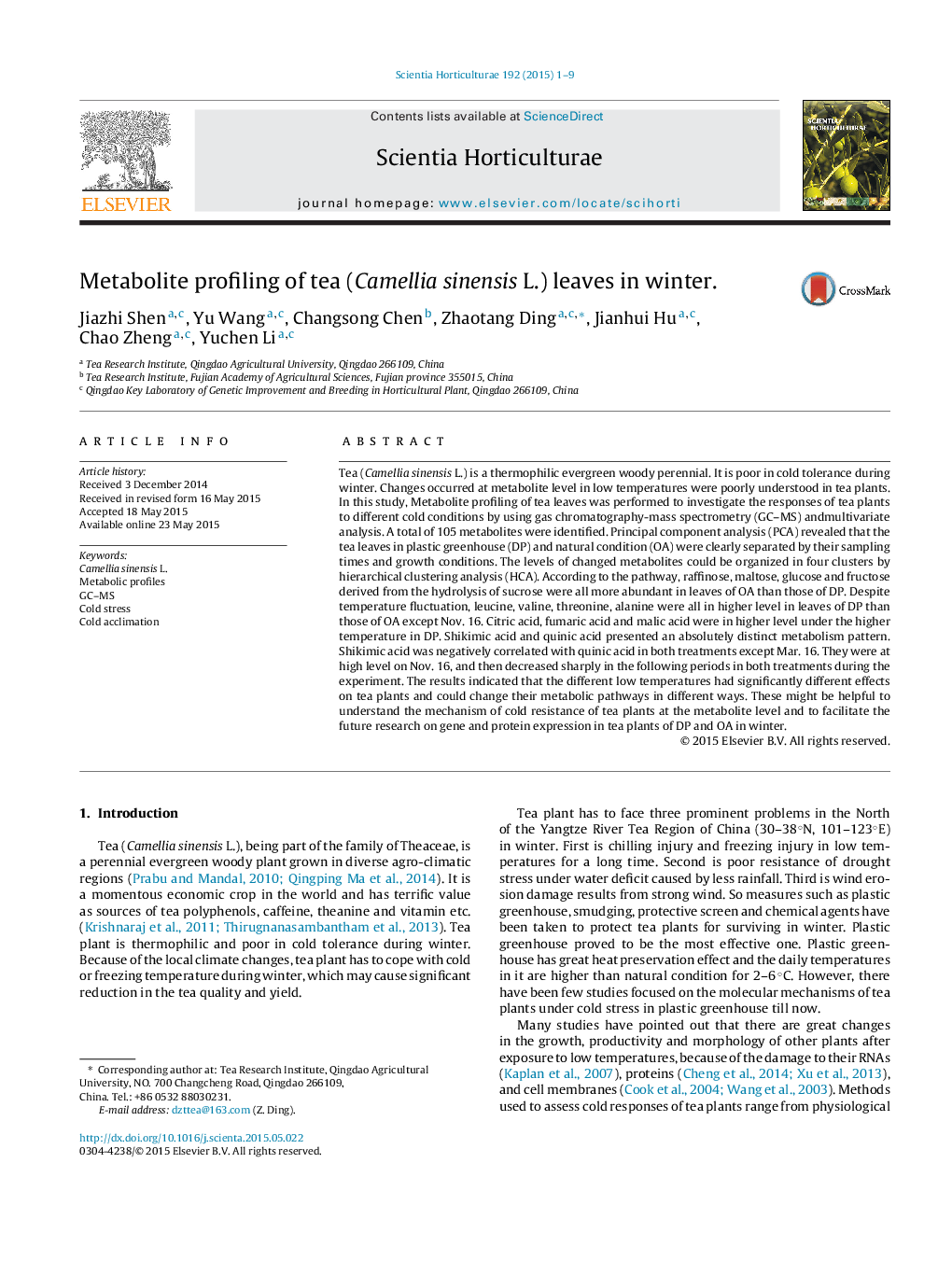| کد مقاله | کد نشریه | سال انتشار | مقاله انگلیسی | نسخه تمام متن |
|---|---|---|---|---|
| 4566225 | 1628806 | 2015 | 9 صفحه PDF | دانلود رایگان |

• Greenhouse-grown and natural-grown tea plant in winter were studied by metabolomics.
• Despite temperature fluctuation, amino acids were high in leaves of DP except Nov.16.
• Shikimic acid correlated with quinic acid negatively in both DP and OA except Mar.16.
• The results may be helpful to know the mechanism of cold resistance in tea plants.
Tea (Camellia sinensis L.) is a thermophilic evergreen woody perennial. It is poor in cold tolerance during winter. Changes occurred at metabolite level in low temperatures were poorly understood in tea plants. In this study, Metabolite profiling of tea leaves was performed to investigate the responses of tea plants to different cold conditions by using gas chromatography-mass spectrometry (GC–MS) andmultivariate analysis. A total of 105 metabolites were identified. Principal component analysis (PCA) revealed that the tea leaves in plastic greenhouse (DP) and natural condition (OA) were clearly separated by their sampling times and growth conditions. The levels of changed metabolites could be organized in four clusters by hierarchical clustering analysis (HCA). According to the pathway, raffinose, maltose, glucose and fructose derived from the hydrolysis of sucrose were all more abundant in leaves of OA than those of DP. Despite temperature fluctuation, leucine, valine, threonine, alanine were all in higher level in leaves of DP than those of OA except Nov. 16. Citric acid, fumaric acid and malic acid were in higher level under the higher temperature in DP. Shikimic acid and quinic acid presented an absolutely distinct metabolism pattern. Shikimic acid was negatively correlated with quinic acid in both treatments except Mar. 16. They were at high level on Nov. 16, and then decreased sharply in the following periods in both treatments during the experiment. The results indicated that the different low temperatures had significantly different effects on tea plants and could change their metabolic pathways in different ways. These might be helpful to understand the mechanism of cold resistance of tea plants at the metabolite level and to facilitate the future research on gene and protein expression in tea plants of DP and OA in winter.
Journal: Scientia Horticulturae - Volume 192, 31 August 2015, Pages 1–9